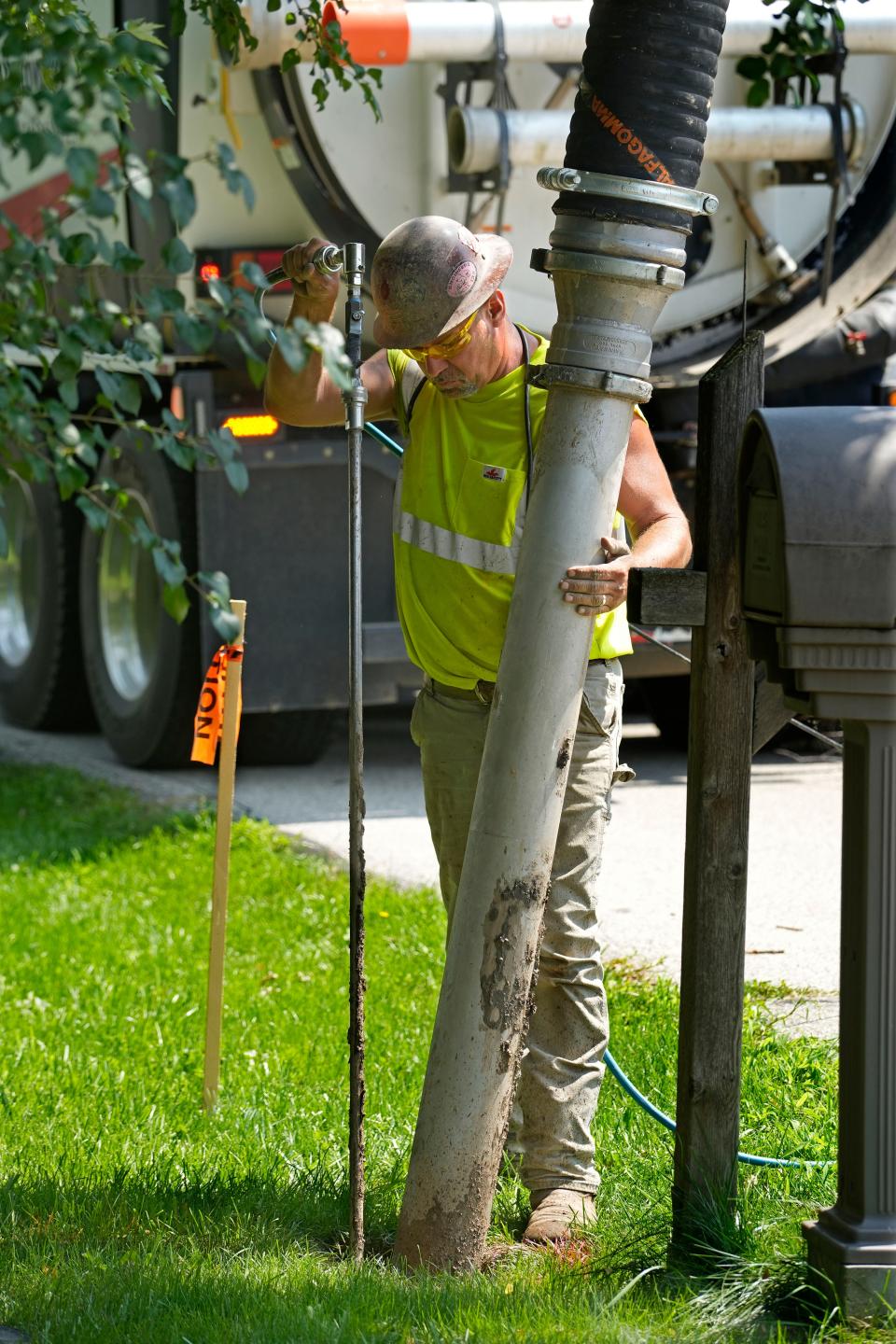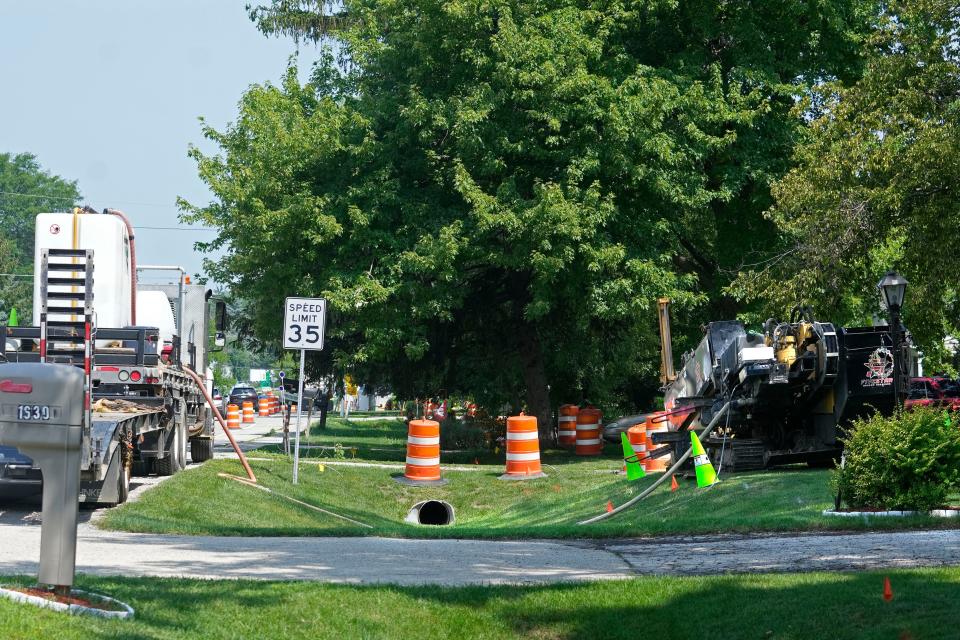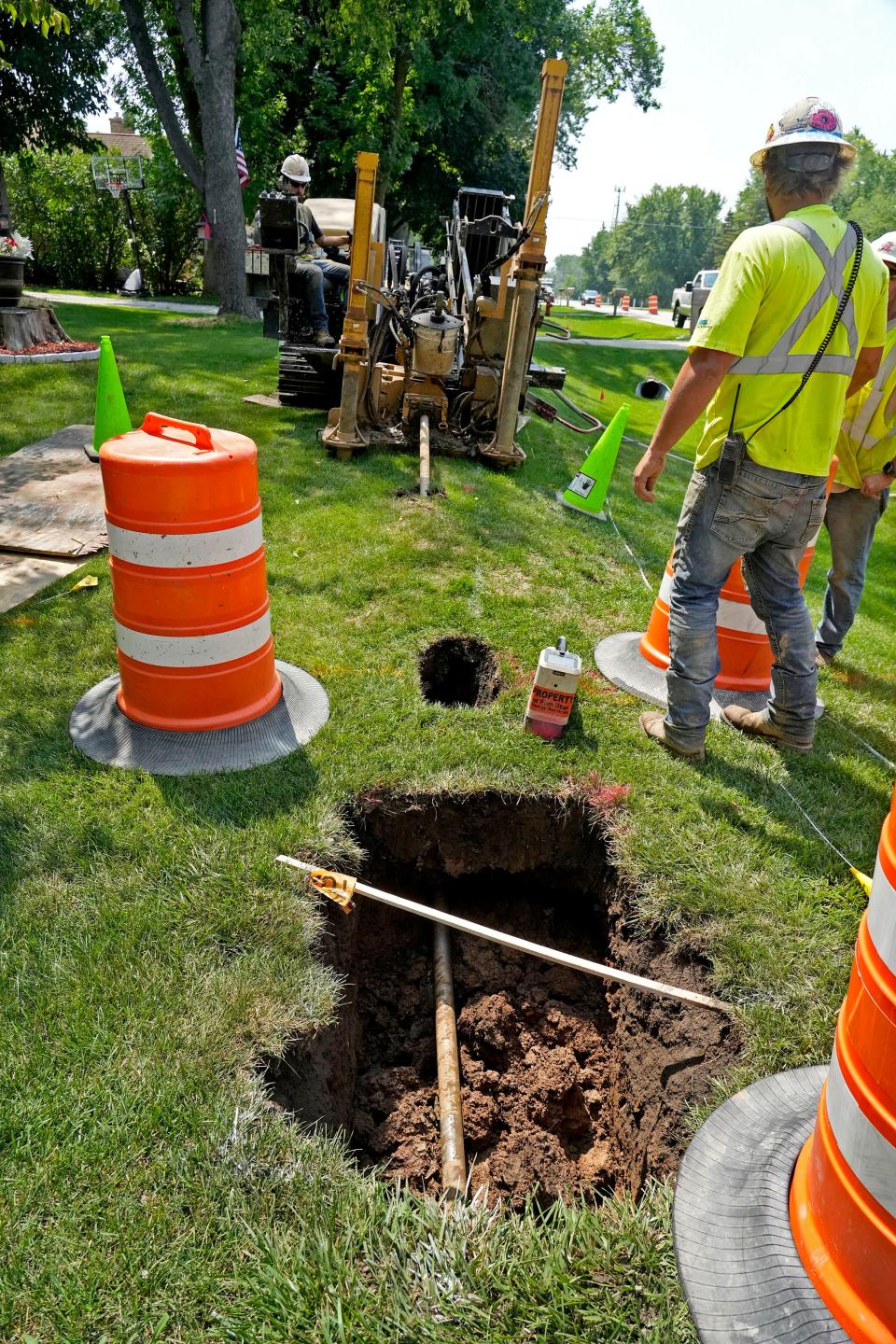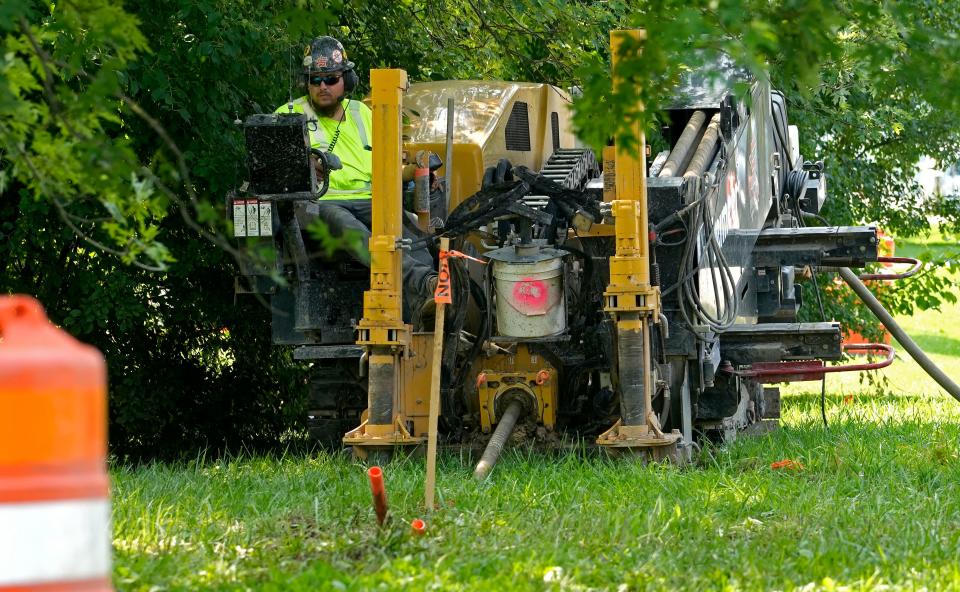Billions in rural internet grants could be a once-in-a generation opportunity

Billions of dollars in recently announced federal grants have been called a once-in-a-generation opportunity for internet service in rural America. But the same prediction was made about other plans, and some of those fell far short of their goals.
The new funding is aimed at getting high-speed internet, also known as broadband, to even some of the most sparsely populated areas of the country by 2030.
In late June, President Joe Biden unveiled more than $42 billion in grants under the program, the Broadband Equity Access Deployment Act.
“It’s the biggest investment in high-speed internet ever, because for today’s economy to work for everyone, internet access is just as important as electricity or water or other basic services,” Biden said in a June 25 speech.
Wisconsin’s been allocated more than $1 billion under the program. That’s in addition to more than a billion in subsidies already spent or allocated for internet expansion in the state.
Wisconsin has roughly 246,000 locations lacking access to even minimum broadband speeds of 25 megabit per second downloads and 3 Mbps uploads, and another 217,000 without access to 100 Mbps downloads and 20 Mbps uploads, adequate speeds for many households, according to the state Public Service Commission.
The locations are spread across the entire state, said PSC Chairwoman Rebecca Cameron Valcq.

Grant target areas where previous program fell short
Areas with little or no available service are the priority under the BEAD grants. Yet some of the money could be used to upgrade networks built earlier under the $20 billion Connect America Fund.
In February 2012, FCC officials called that program a once-in-a-generation opportunity to “finish the job of connecting rural America to broadband, while bringing accountability and fiscal responsibility to programs that for too long lacked both.”
Unfortunately, Connect America Fund fell far short of those lofty goals.
In 2015, it only required grant recipients to deliver service of 10 Mbps downloads and 1 Mbps uploads — not even half the FCC's definition of broadband at the time, and not nearly enough bandwidth for today’s households.
“It was a totally wasted investment,” said Christopher Mitchell, director of the community broadband networks initiative at the Institute for Local Self-Reliance in Minneapolis.
“No one bothered to investigate” whether the program’s requirements were even met, Mitchell said.
In one rural Wisconsin county after another, Connect America Fund left a trail of skepticism and frustration. Many communities initiated their own broadband expansion projects, seeking state grants and local partnerships, because they hadn’t seen much help from the federal government and big-name service providers.

Adequate service supports families, rural businesses
Broadband must be able to simultaneously support a family's need for connecting to the office, participating in virtual classrooms, live chats with a doctor or friend group.
The internet has become the linchpin for rural businesses as well. Farmers need it to buy equipment and follow crop prices. Factories need it to connect with suppliers and customers. Rural health centers, tourism businesses, shops on Main Street, all need a robust, reliable connection.
Clark County, with only 29 people per square mile, has struggled with broadband access for years.
“People are only going to move here if they can get connected,” said Sheila Nyberg, executive director of the Clark County Economic Development and Tourism Bureau.
Subsidies and upgrades are necessary
Proponents of broadband grants say they’re necessary for locations where internet service providers otherwise wouldn’t go because it’s too expensive and wouldn’t be a good return on their investment.
Often, the grants cover half or more of the cost of burying fiber optic cable in areas with just a few homes per mile. Older networks must be upgraded as consumers demand more from the internet through video conferencing, telemedicine, and other uses not prevalent 10 years ago.
“I think it’s a reasonable investment,” Valcq said.
The best broadband, it's generally agreed, is an affordable connection that supports the needs of consumers and businesses for many years into the future.
It's not unreasonable to achieve because fiber-optic cable, the industry's gold standard, has near limitless capabilities. Once buried in the ground, it can be upgraded through electronics rather than digging up the cable.

Fiber optic cable is the focus for providers
Fiber optic cable is the priority under the BEAD grants.
“It’s incredibly resilient,” said Andrew Petersen, a senior vice president at TDS Telecommunications, a Madison-based internet service provider.
TDS has been one of the larger grant recipients in Wisconsin and some other states.
“No one’s been a bigger evangelist for getting broadband to the hardest-to-serve areas in the country than us. We’ve brought service to the bottom of the Grand Canyon, islands off the coast of Maine, and many places in rural Michigan and Wisconsin,” Petersen said.
Many of the grants called for a 50% match from the company.
“We need a public-private partnership to get these projects over the finish line," Petersen said.
But it’s still unknown how much it would cost to get broadband access to everyone in Wisconsin, said Thomas Moore, president of the Wisconsin Cable Communications Association.
Fiber cable won’t be affordable or practical in some sparsely populated areas or locations with rugged terrain. In those places, wireless networks could fill the gaps.
“I think the jury is still out on the resources needed to reach every location," Moore said.
Five-year plans are due in August
Wisconsin and other states are developing five-year plans, due later this month, for how they will use BEAD funding.
“It’s definitely a once in a generation opportunity,” Valcq said.
Under the program, Wisconsin will receive $1,055,823,573.71. The funding will be awarded to the state in two stages, starting next summer, with 80% coming in 2025. The state Public Service Commission will manage the spending and administer broadband grants through competitive bids.
The federal guidelines call for serving the neediest locations first, said Bill Esbeck, executive director of the Wisconsin State Telecommunications Association.
“My member companies are looking at what the guidelines say and what the program may look like. But we won’t know the details that apply specifically to Wisconsin until after the PSC submits its five-year plan in August and its initial proposal at the end of the year,” Esbeck said.
BEAD grants are not supposed to used where another federal program has already funded the location.
One of those other programs is the $20 billion Rural Digital Opportunity Fund, or RDOF, that also aims to bring high-speed internet access to millions of U.S. households.
It’s been dogged by allegations of grant recipients unable to fulfill their obligations. But there’s evidence of it working in Wisconsin as large spools of fiber cable are rolled out along rural roads and work crews are getting homes connected.

FCC promises much faster internet speeds
The FCC says nearly all the sites, nationwide, will receive internet speeds of at least 100 Mbps downloads and 20 Mbps uploads, a huge improvement for most rural areas. In fact, the FCC says about 85% will get gigabit speeds of around 1,000 Mbps.
The 10-year program, unveiled in 2019, is a “once in a generation opportunity” for rural communities, according to RDOF.COM, a consortium of electric cooperatives seeking broadband expansion.
In Wisconsin, 14 companies were awarded nearly $374 million for 240,546 locations. One of the biggest grants, $168 million for roughly 140,000 locations, went to Charter Communications.
Charter said in 2022 it reached an additional 43,000 homes and businesses in the state. The company’s work has continued this year in dozens of rural communities.
“We can't overstate the importance of rural connectivity to Wisconsin’s future and are proud of the role we’re playing in connecting unserved communities,” said company spokeswoman Kimberly Haas.
There are a slew of other government grants and subsidies simultaneously aimed at improving internet access across the nation. Some have covered 100% of a company's buildout cost in a rural area.
The FCC recently extended its Alternative Connect America Model (ACAM) program through 2028, upping the speed requirements for service providers to at least 100 Mbps downloads and 20 Mbps uploads, and making $13.5 billion in support available over the 10-year extension.
The BEAD grants, that are being funded from the federal infrastructure program which includes roads, bridges, ports and green energy, should be a game changer for rural broadband, said Doug Dawson, a broadband consultant from North Carolina who has worked in many states including Wisconsin.
BEAD allocations range from around $27 million for the U.S. Virgin Islands to $3.3 billion for Texas. Some of the money could be used for workforce training as thousands of jobs are created to extend and maintain broadband networks.
“There will be many hundreds of millions of dollars in grants given to each state to fund the construction,” Dawson wrote in a blog.
“This is likely once-in-a-generation funding, so there will only be one chance to do this right,” he said.
This article originally appeared on Milwaukee Journal Sentinel: Billions in rural internet grants are fueling expansions
